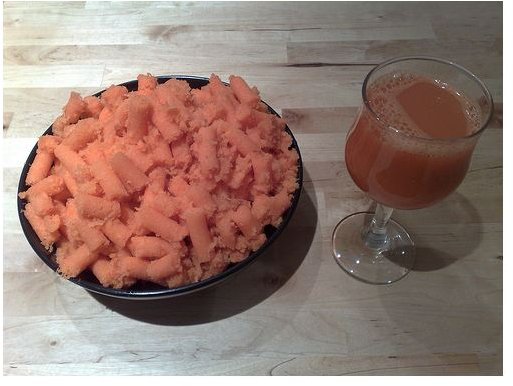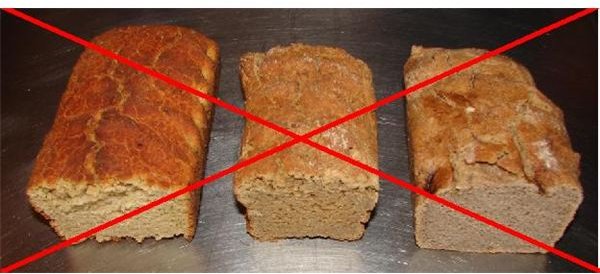An Overview of Diet for Kids with Autism
Gluten and Casein Free Diet for Kids with Autism
The most popular diet for kids with autism is a gluten free casein free diet (GFCF diet). This diet bases itself on the premise that problems in the gut, specifically “leaky gut syndrome” causes autism.
A possible cause of leaky gut syndrome is overgrowth of yeast that can produce toxic by-products that burrow into the intestinal wall and cause the leaky gut. The gluten and casein peptides that enter the body through dietary intake normally break down harmlessly in the gut. With leaky gut, these peptides leak through the gut walls without breaking down, seep into the bloodstream and penetrate the blood-brain barrier. This is believed by some to cause the damages that result in autism.
Proponents of gluten free casein free diets recommend elimination of the following foods to negate the effects of the leaky gut:
- OUT: Grains such as wheat, rye, barley, malt, semolina, and oats that contain gluten, and foods made from such grains. IN: Healthy alternatives to wheat include brown rice, buckwheat, millet, and quinoa, all rich in protein and relatively unprocessed compared to other cereals. Buckwheat and millet also have nitrilosides that contribute to detoxifying the body.
- OUT: Milk, soy cheese, dairy products such as cheese, cream, butter, yoghurt, whey, ice cream, and some brands of margarine, all of which contain the protein casein. IN: Increasing intake of fruits and vegetables such as spinach and orange, and dry fruits such as almonds can compensate for the calcium lost by avoiding milk and dairy products
- OUT: Processed foods that can contribute to pathogenic bacteria and fungi in the gut that cause leaky gut in the first place.
- OUT: Other foods that cause inflammation such as organ meat and hydrogenated oils.
Image adapted from Wikimedia Commons
Prebiotics and Probiotics
Intake of prebiotic foods lead to the proliferation of probiotics, or live helpful microorganisms, which heal the leaky gut.
Wheat, soy, and diary based products are good prebiotic foods, but since such foods have to be avoided in gluten free casein free diets, inclusion of other prebiotic foods such as artichokes, bananas, barley, berries, chicory, flax, garlic, onions, legumes, and/or honey are recommended in the diet for kids with autism.
Whole and High Fiber Foods
The diet for kids with autism needs to focus on whole foods high in fiber to improve digestion. Improved digestion makes children feel better, enabling them to focus on overcoming impulsive behavior, language difficulties, and sleeping irregularities.
The best high fiber foods include avocado, beans, carrot, chickpeas, eggplant, lima beans, mushrooms, potato with skin, peas, dates, apple, fig, blackberry, and banana. Fruits and vegetables should be raw when consumed whenever possible so as to retain their nutritional value. Cooking leads to a loss of nutrients, and the longer the cooking process, the greater the damage to essential vitamins and minerals in the food.
One good way to reduce cooking time of beans is to keep them soaked overnight in water.
Other Foods

Along with fruits and vegetables, a diet for kids with autism may include fresh meats, fish, poultry, and eggs. Such foods contribute to a balanced diet and provide the body with many essential nutrients.
Eggs especially take an important place owing to their ease of digestion and absorption by the gut. Raw egg yolks facilitate easy assimilation of essential amino acids, vitamins, minerals and fatty acids, but need to be consumed whole to prevent the risk of potentially harmful cholesterol by-products. Egg whites require cooking, as raw egg white may impair the synthesis of biotin in the gut.
Kids may develop food allergies unrelated to gluten and casein, and as such the diet for kids with autism needs customization to each individual.
Image Credit: flickr.com/man_with_beard
Disclaimer
The effectiveness of gluten and casein free diet for kids with autism remains inconclusive. Some studies show that it leads to a reduction of autism symptoms whereas other bodies of research say the opposite.
NB: This article is for informational purposes and should not replace the sound advice of a certified dietician or medical practitioner.
References
- Noeske, Tracy. “Autism and the GFCF Diet.” Retreived from https://dc.cod.edu/cgi/viewcontent.cgi?article=1031&context=essai on 23 January 2011.
- Rusignola, Diane. “Conference discusses whether diet can ‘heal’ autism.” Retrieved from https://news.medill.northwestern.edu/chicago/news.aspx?id=130955 on 23 January 2011.
- Natasha Campbell-McBride. “The Essential Diet for Children with Autism.” Retrieved from https://www.dietarysupport.com/essentialdiet%28art%29.html on 23 January 2011.
- Mayo Clinic. “Prebiotics: What are they?” Retrieved from https://www.mayoclinic.com/health/prebiotics/AN02032 on 23 January 2011.
